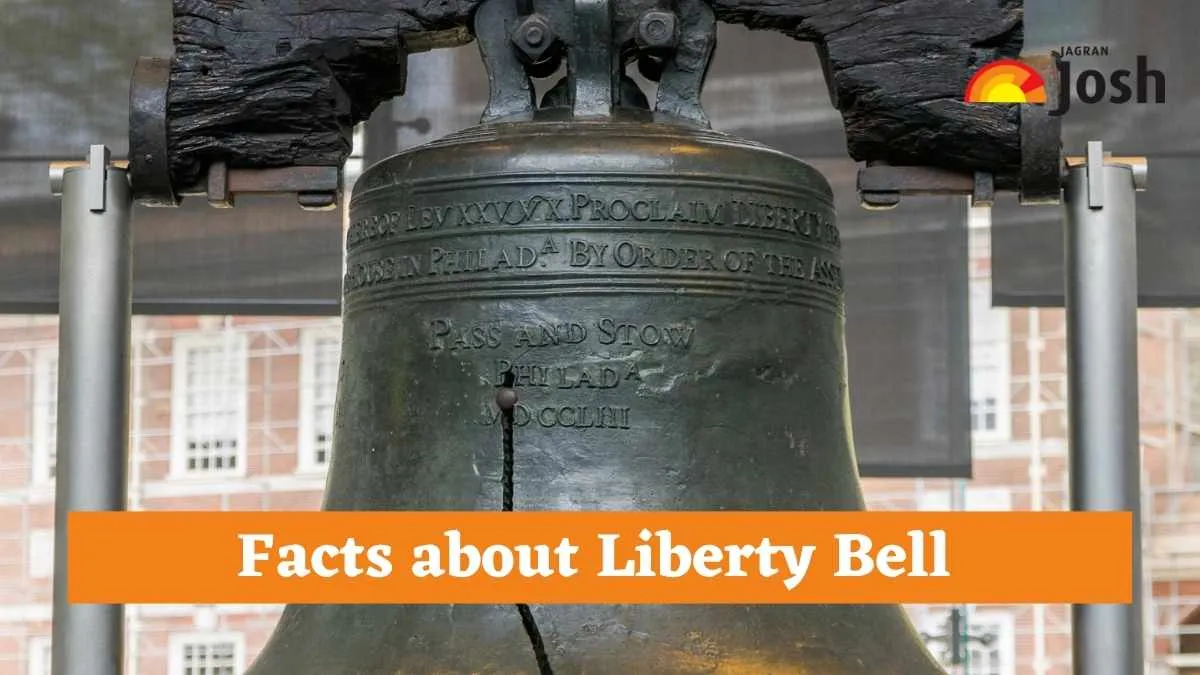The Liberty Bell may sit silent now, but its existence resonates with the centuries of history. It is a symbol of American independence, and its famous crack embodies the spirit of revolution and struggle for freedom. Therefore, millions journey to Philadelphia to gaze upon the powerful artifact. But, many lesser-known Liberty Bell facts tell the story beyond its bronze and biblical inscription. It carries a tale of resilience, repair attempts, and how it became a universal symbol of justice.
| Features | Facts about the Liberty Bell |
| Original Name | State House Bell |
| Casting Date | 1751 (original order) 1753 (recast) |
| Inscription | "Proclaim Liberty Throughout All the Land Unto All the Inhabitants thereof." (Leviticus 25:10) and "By Order of the ASSEMBLY of the Province of PENSYLVANIA [sic] for the State House in Philada." John Pass and John Stow, Philada MDCCLIII. |
| Location | Liberty Bell Center, Philadelphia, Pennsylvania |
| Last Ringing | 1846 for George Washington’s Birthday |
| Status | Became a symbol of the abolitionist movement in the 1830s, later embraced by women’s suffrage and civil rights movements. |
Check Out: 7 Lesser-Known Facts about the Declaration of Independence
5 Key Liberty Bell Facts and Its History
Here are the most important truths about the Liberty Bell that will tell you how it became a celebrated symbol of US independence:
1. It was NOT Always Called the Liberty Bell
The artifact was simply known as the Pennsylvania State House Bell before it gained its iconic name. It was ordered in 1751 for the Pennsylvania State House, which is now known as Independence Hall. Since then, it has served practical purposes such as summoning lawmakers and alerting the public to important announcements. The name Liberty Bell was not widely adopted until the 1830s. It actually happened when abolitionist societies embraced it as a powerful symbol in their fight against slavery. Their inspiration was drawn from its prophetic inscription.
2. The Famous Crack is the Fruit of Repair Attempts
The prominent fissure on the Liberty Bell is not a single, catastrophic crack but rather the result of multiple repair attempts. The original bell cast in London by the Whitechapel Foundry actually cracked almost immediately upon its arrival in Philadelphia in 1752. It was then recast by local foundrymen John Pass and John Stow in 1753. The famous crack you see today has emerged over decades of continuous use and was subject to an attempted repair in 1846. Workers widened the hairline crack in hopes of preventing its spread and restoring the bell's tone for George Washington's birthday celebration. Unfortunately, this effort failed, and a second hairline crack appeared. The crack ran from the word "Philadelphia" through "Liberty” to permanently silence the bell.
3. Its Powerful Inscription Inspired the Abolitionist Cause
Did you know that there is an inscription on the bell that reads, “Proclaim Liberty Throughout All the Land Unto All the Inhabitants thereof,” from the biblical book of Leviticus 25:10. This verse was chosen by Isaac Norris, who was a speaker of the Pennsylvania Assembly in 1751. Who knew back then that it would become profoundly significant more than 80 years later? Abolitionists in the 1830s seized upon this message and adopted the bell as a symbol for their anti-slavery movement. The State House Bell got rebranded as the Liberty Bell in the end.
4. It was Secretly Transported During the Revolution
The Liberty Bell was spirited away to prevent its capture and melting down for British weaponry. It happened in 1777 when British forces prepared to occupy Philadelphia during the American Revolutionary War. They hid the bell under hay and manure on a wagon for transporting it to Allentown, Pennsylvania. It was concealed beneath the floorboards of Zion’s Reformed Church.
5. The Bell Did NOT Ring on July 4, 1776
Despite the popular myth, the historical accounts suggest that the Liberty Bell did not ring on July 4, 1776, to celebrate the signing of the Declaration of Independence. The public reading of the Declaration took place on July 8, 1776, and bells across Philadelphia did ring; the State House's steeple was reportedly under repair at the time. So, its participation is unlikely. However, it did ring for other significant events, such as the Stamp Act repeal in 1766, and to call citizens to meetings during the pre-Revolutionary period.
Check Out: 5 Important Facts about the American Revolution History
In the late 19th and early 20th centuries, the Liberty Bell had several cross-country tours by train to various expositions and fairs. These tours allowed millions of Americans, who might never visit Philadelphia, to see this powerful national symbol firsthand. While these journeys strengthened national unity, they also caused additional stress and minor damage to the already fragile bell. Consequently, after 1915, it was decided to keep the Liberty Bell permanently in Philadelphia, where it now resides at the Liberty Bell Center.

Comments
All Comments (0)
Join the conversation